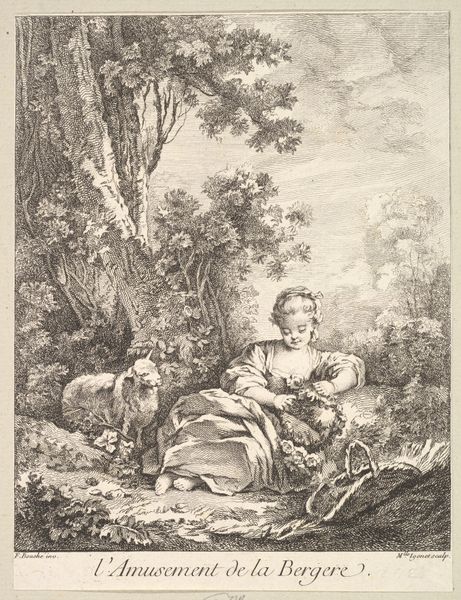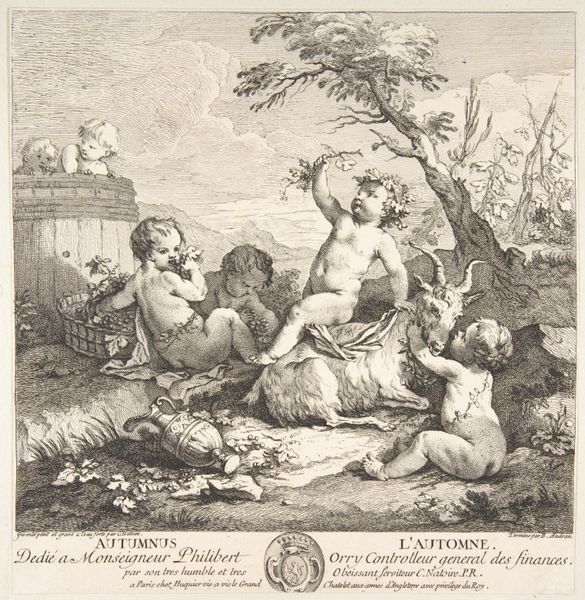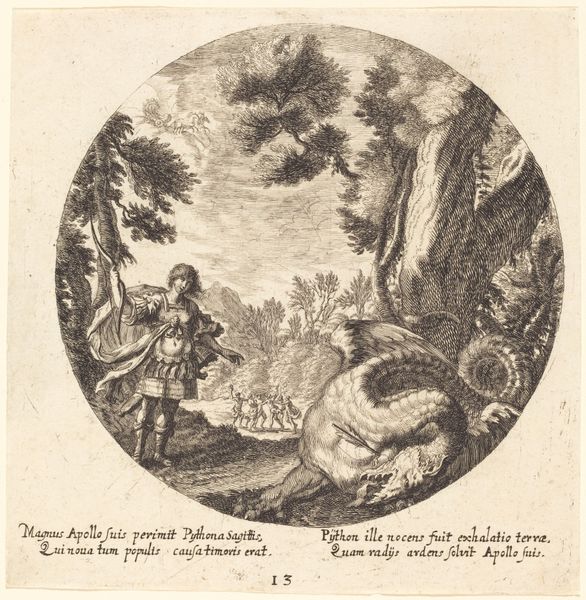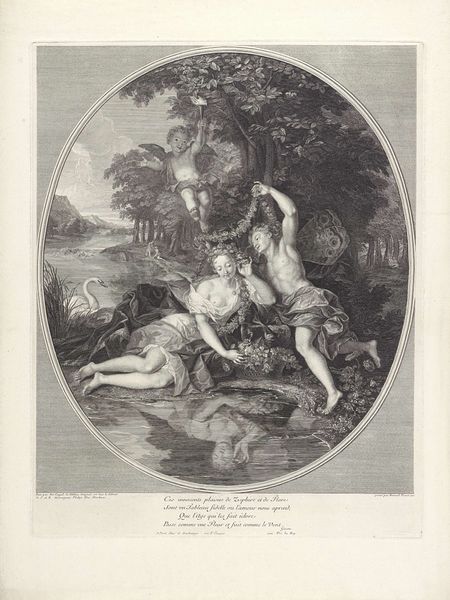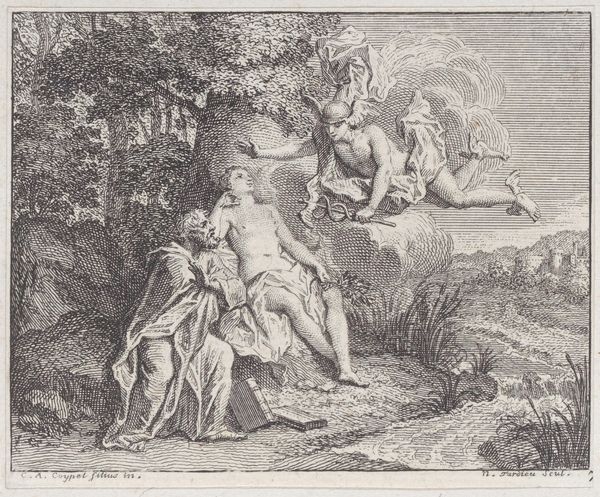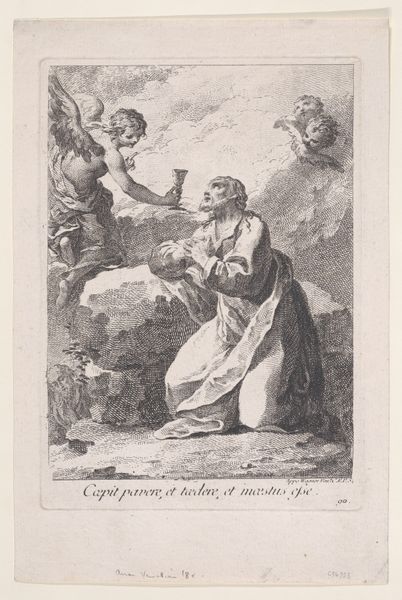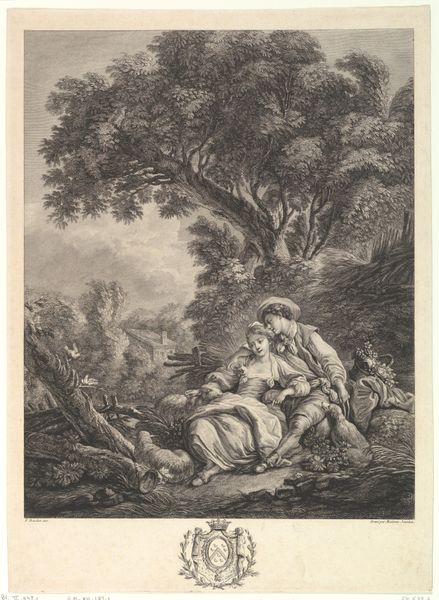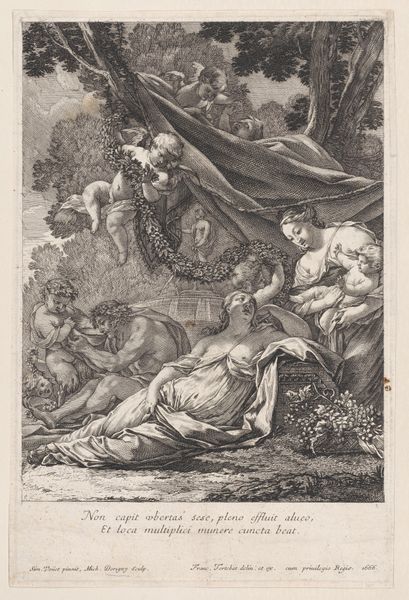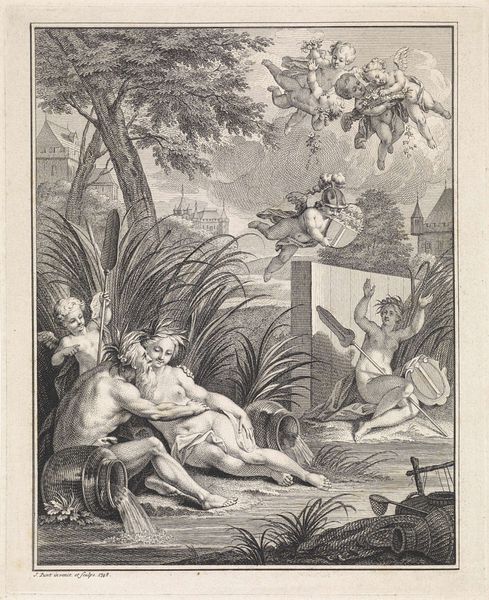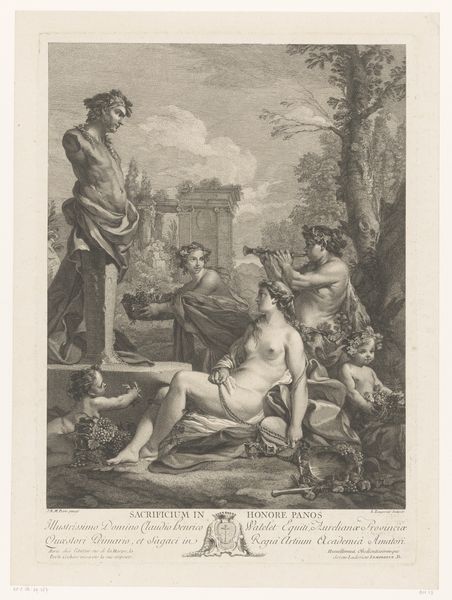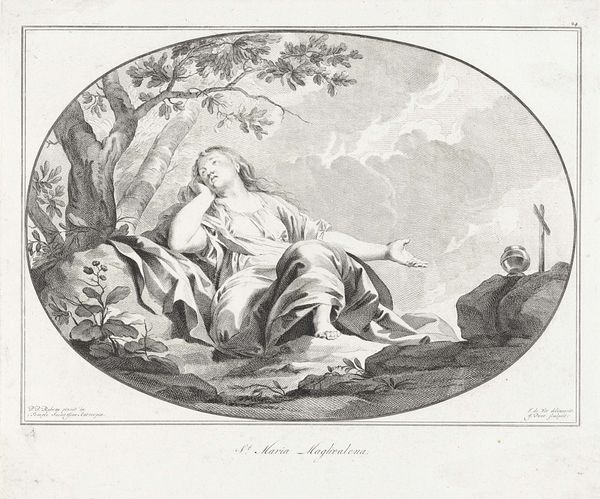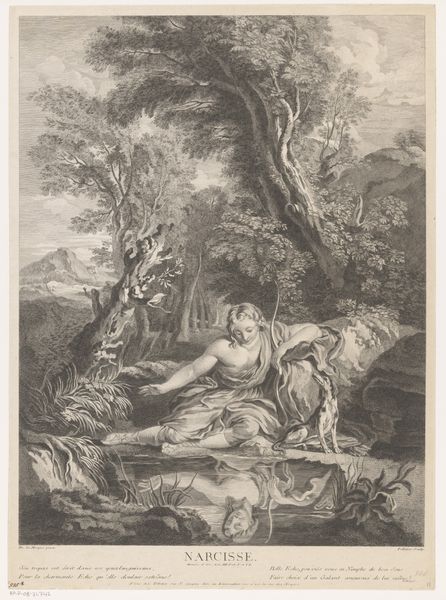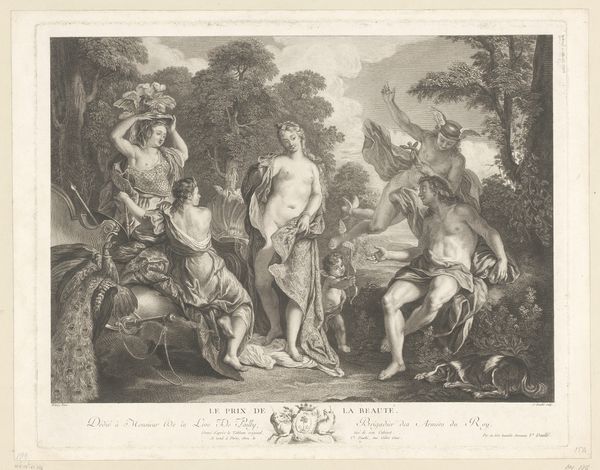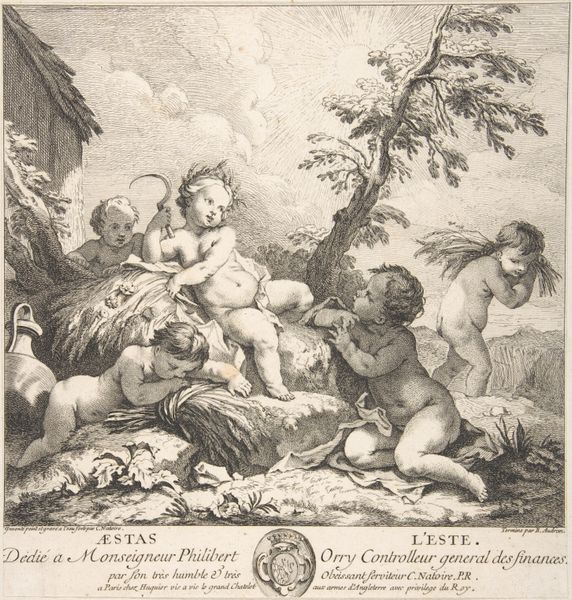
drawing, print, etching, pastel, engraving
#
portrait
#
tree
#
drawing
#
animal
# print
#
etching
#
landscape
#
figuration
#
genre-painting
#
pastel
#
engraving
#
rococo
Dimensions: Sheet (trimmed): 10 3/16 × 9 5/16 in. (25.9 × 23.6 cm)
Copyright: Public Domain
Curator: Here we have "Pastoral Poetry," an engraving from between 1737 and 1747 by Claude Augustin Duflos le Jeune. It presents a classically idyllic scene within a meticulously detailed, almost ornamental frame. Editor: My first impression is that of a delicate, fleeting dream. The fine lines of the engraving create a soft, hazy atmosphere, evoking a sense of idealized rural escape. It's almost as if the whole scene exists in a bubble, separate from the outside world. Curator: That sensation is quite deliberate, and expertly crafted through the circular composition and the balanced interplay of light and shadow. Notice how the lines guide your eye around the form. Observe the subject in repose playing a pipe surrounded by the objects from which they derive their comfort and means of livelihood: an intimate, if not claustrophobic portrait. Editor: I agree. But it feels incredibly constructed, almost a fabrication. "Pastoral Poetry," itself – how does it relate to actual working people in that era? How might this image uphold or challenge notions of leisure, labor, and privilege in pre-Revolutionary France? Are the sheep symbols of something more oppressive and less "pastoral" than initially thought? Curator: While a modern reading can bring such sociopolitical readings to the surface, it is also useful to note the compositional rhythm echoed in Duflos's delicate hand. The engraving represents, quite deliberately, an elegant solution to problems of representing forms in both nature and culture. The landscape becomes both frame and content in this rather subtle exercise in representation. Editor: Absolutely. The contrast between the artifice and the longing for something "natural" becomes palpable. It is indeed beautiful, but it also leaves me wondering about the real people, especially those excluded from such idyllic portrayals. How radical was it even possible to be during the rococo? Curator: I think in that we may come to our point of disagreement, yet mutual awareness! In its careful arrangements and surface refinements, “Pastoral Poetry” reveals formal decisions as a means of generating meaning. Editor: It leaves us with a lingering question: who truly benefits from such a carefully crafted illusion? A question to always bring to art that inspires!
Comments
No comments
Be the first to comment and join the conversation on the ultimate creative platform.
